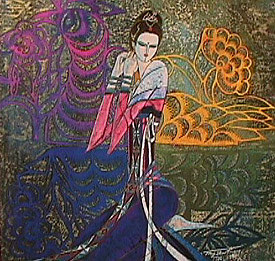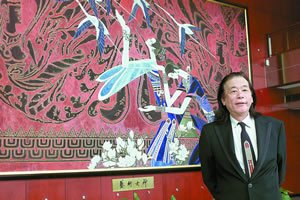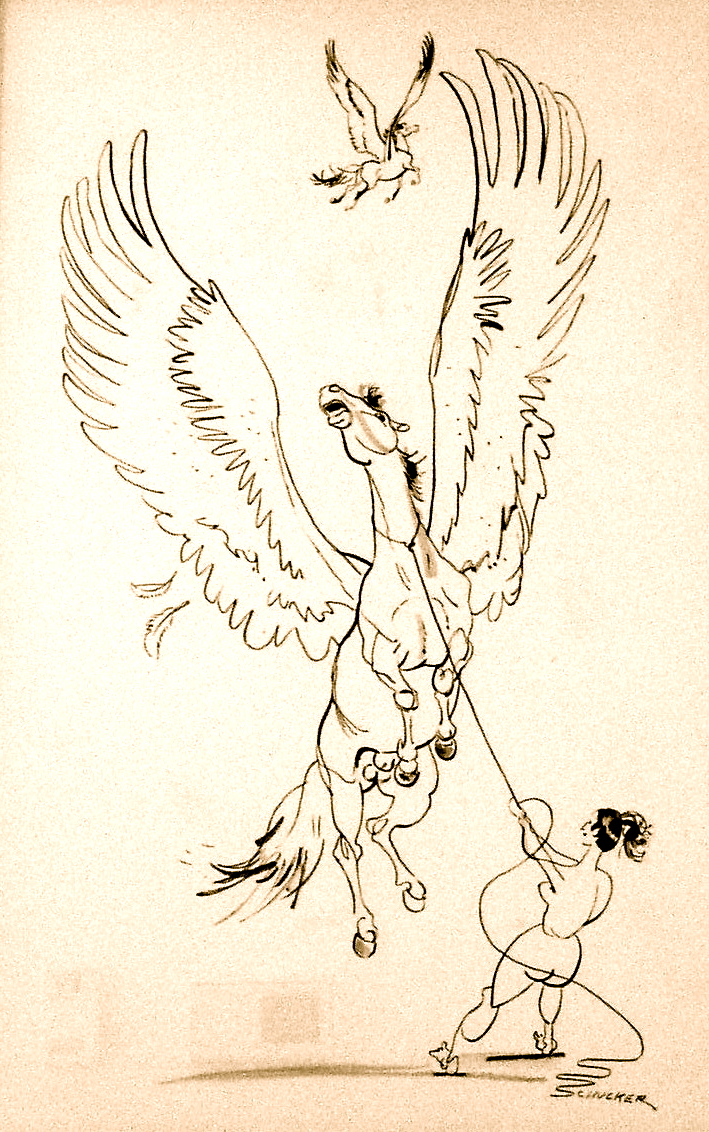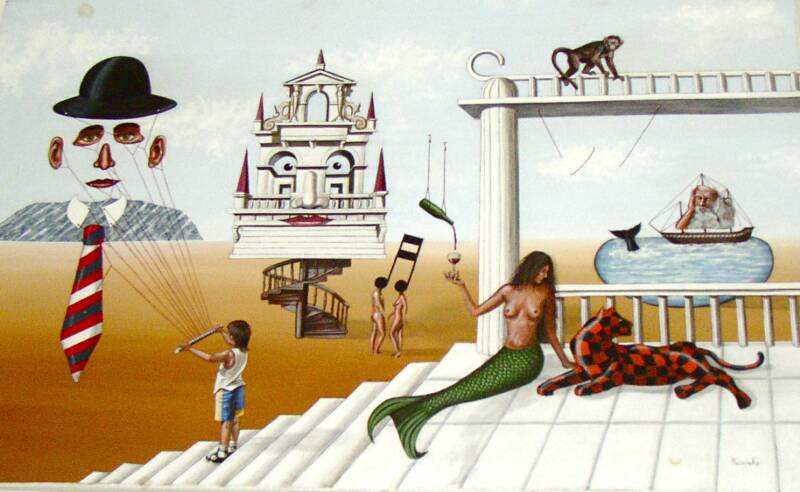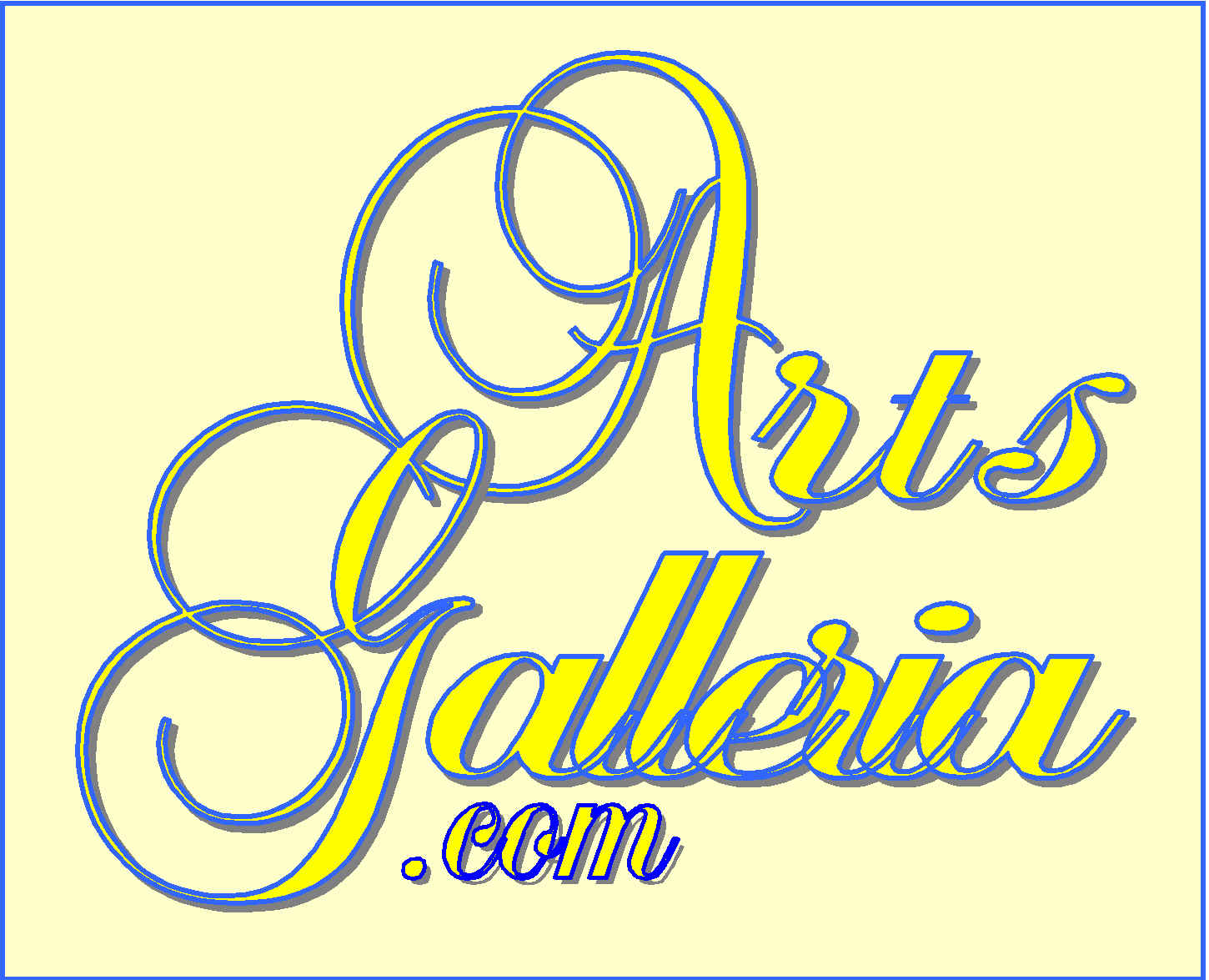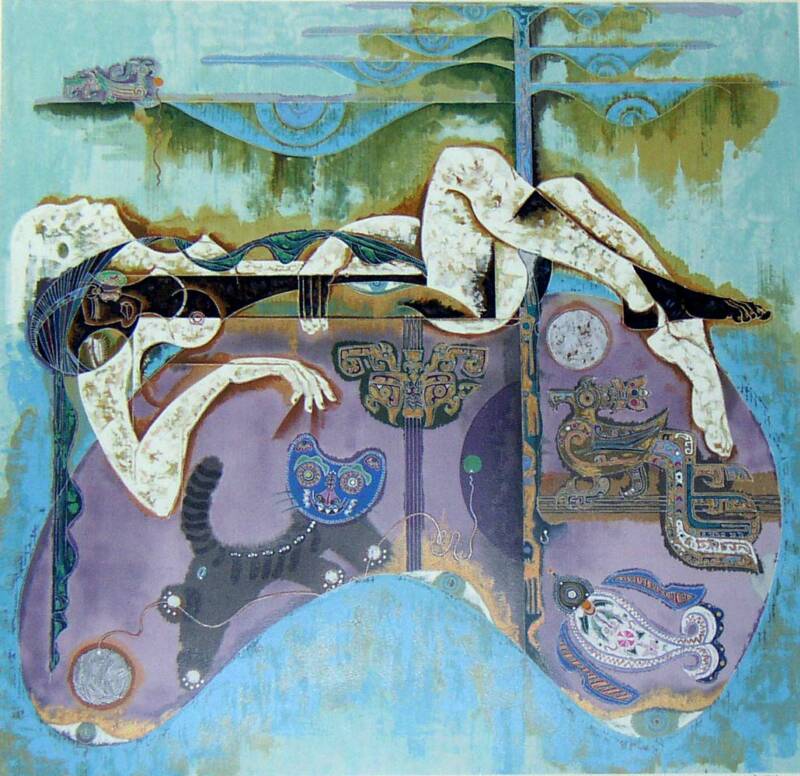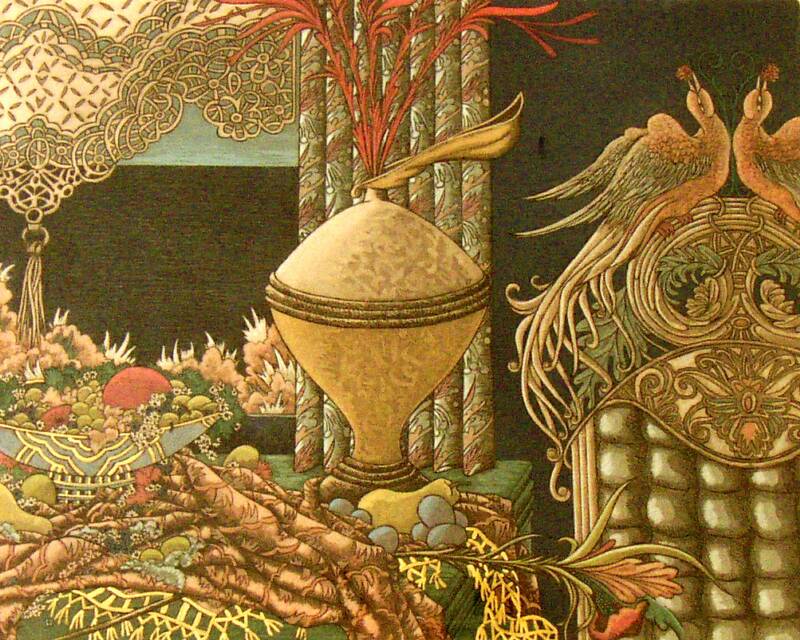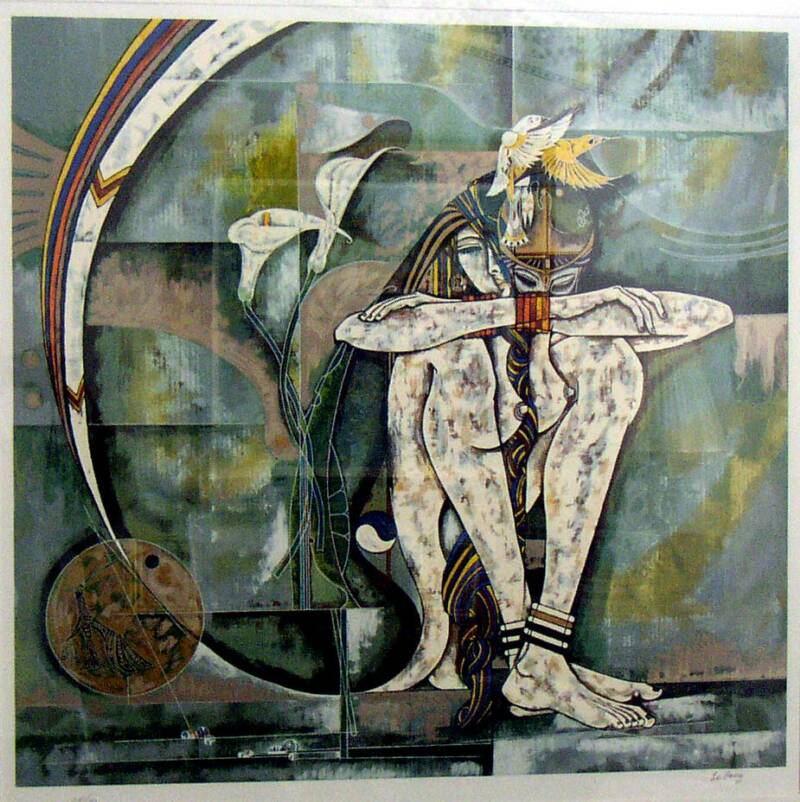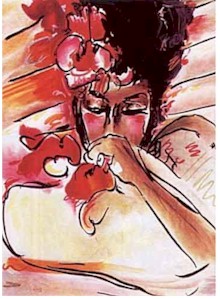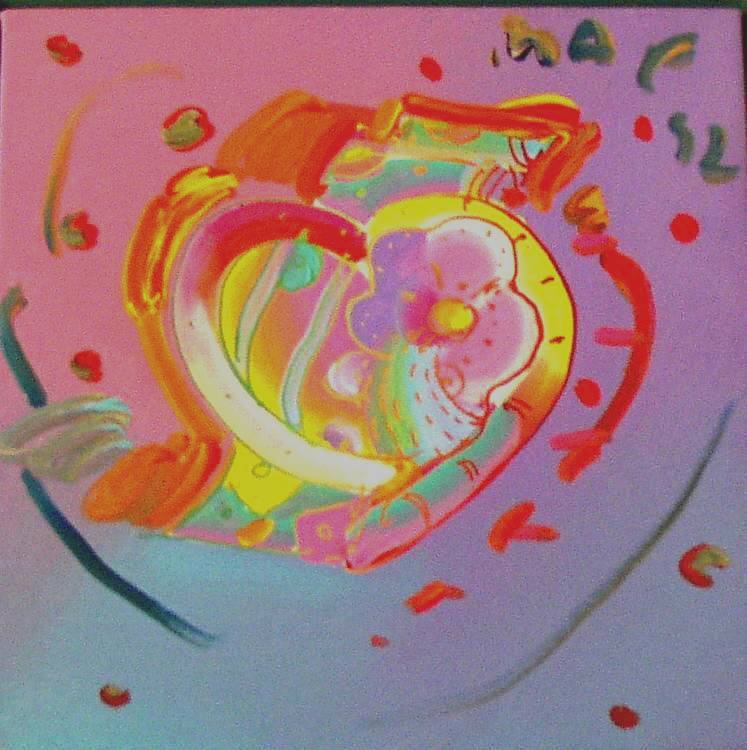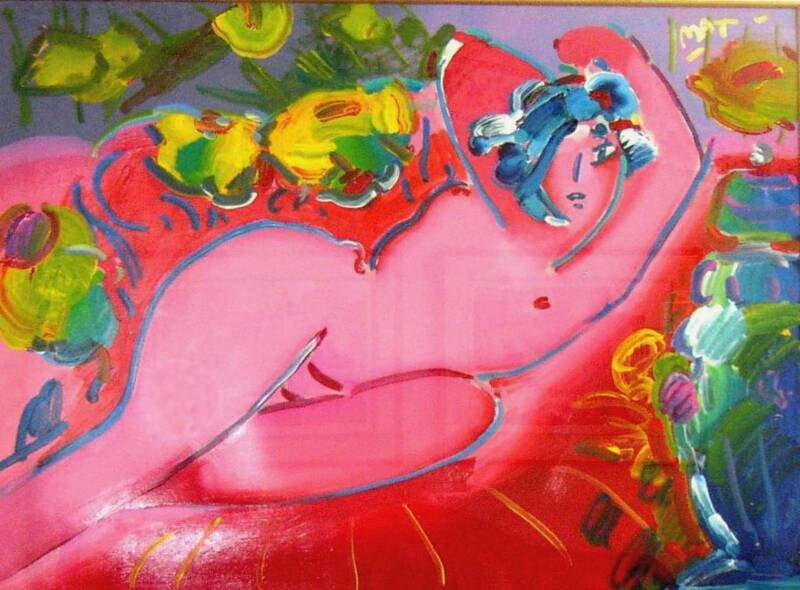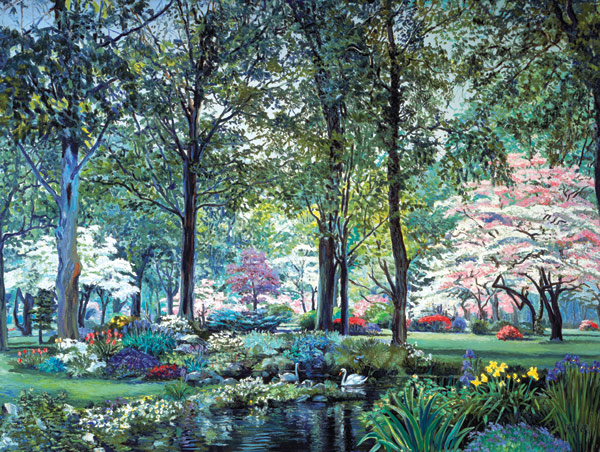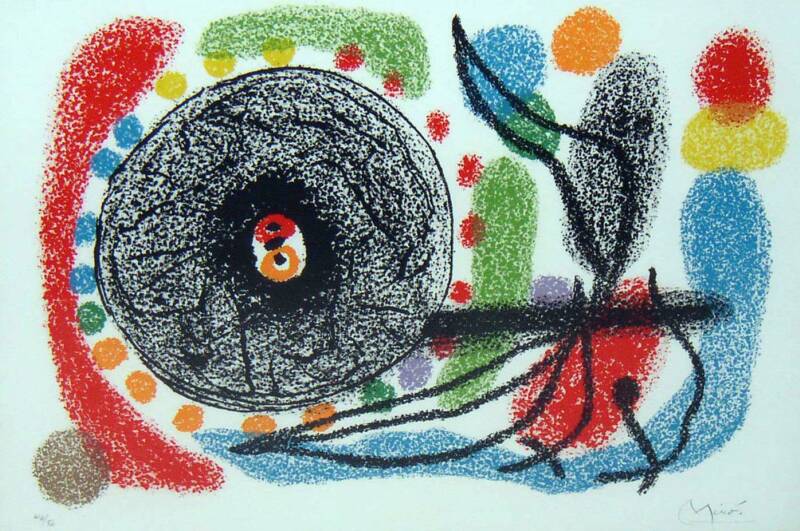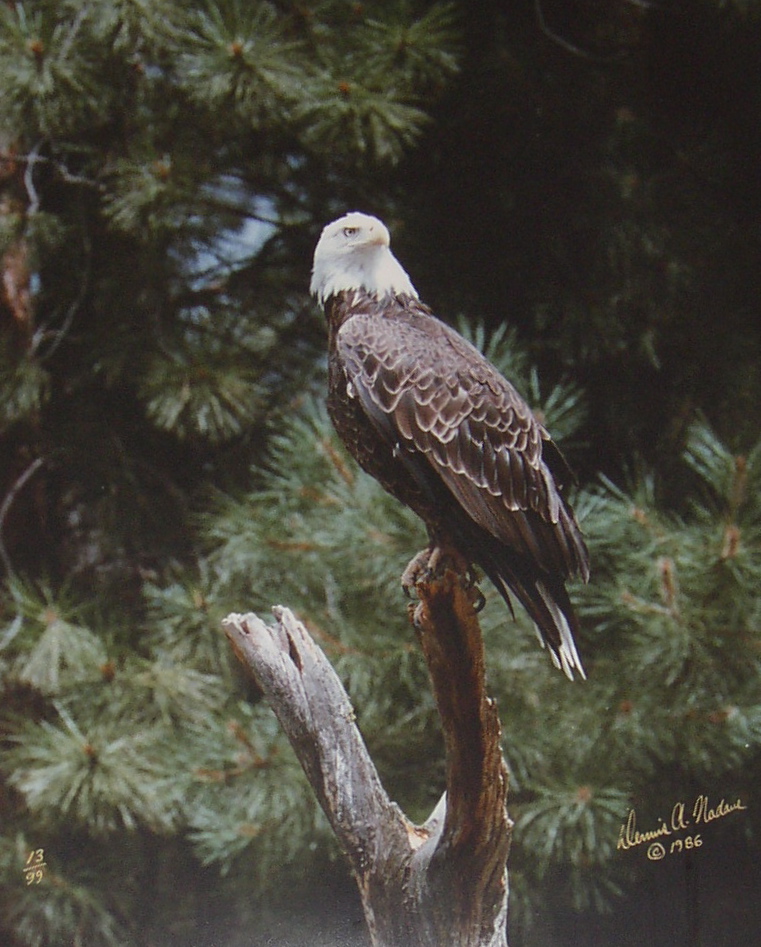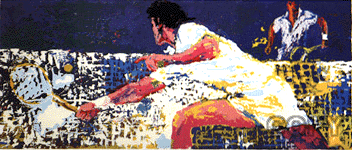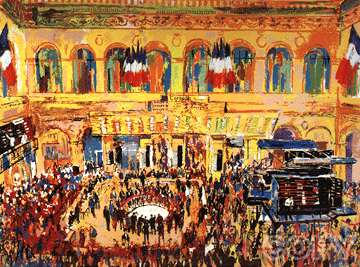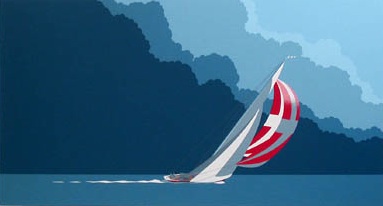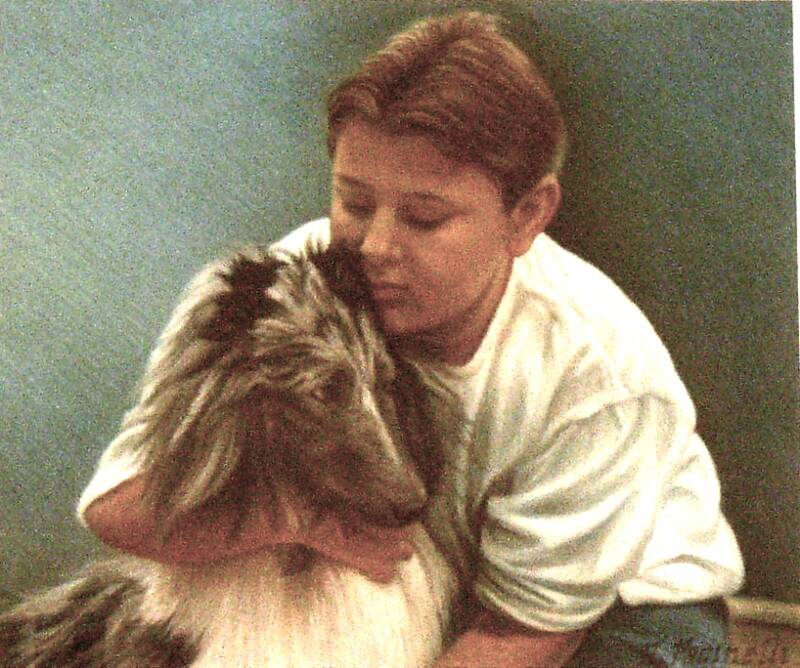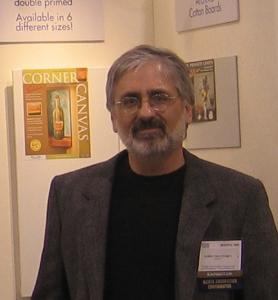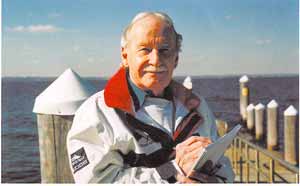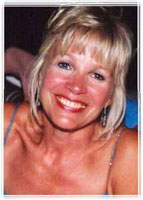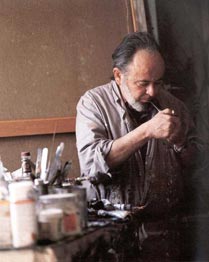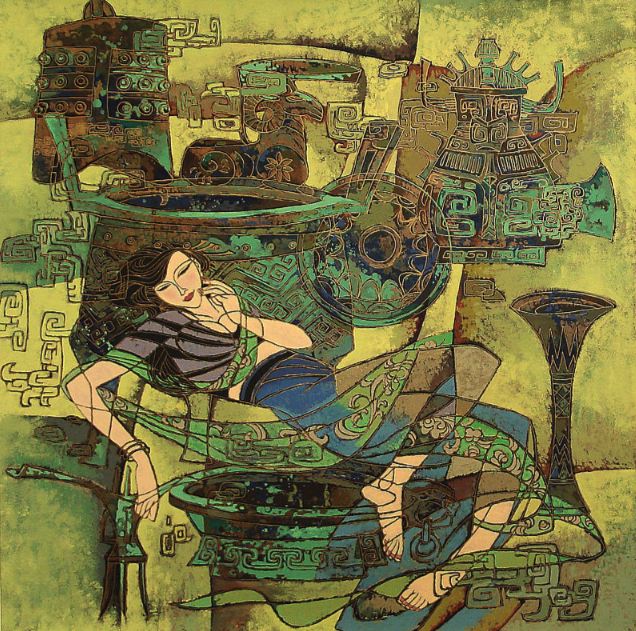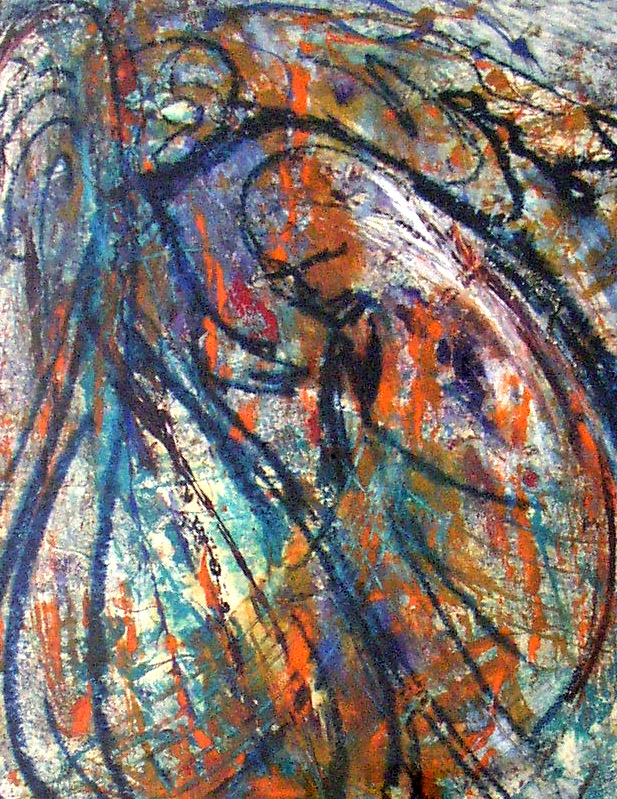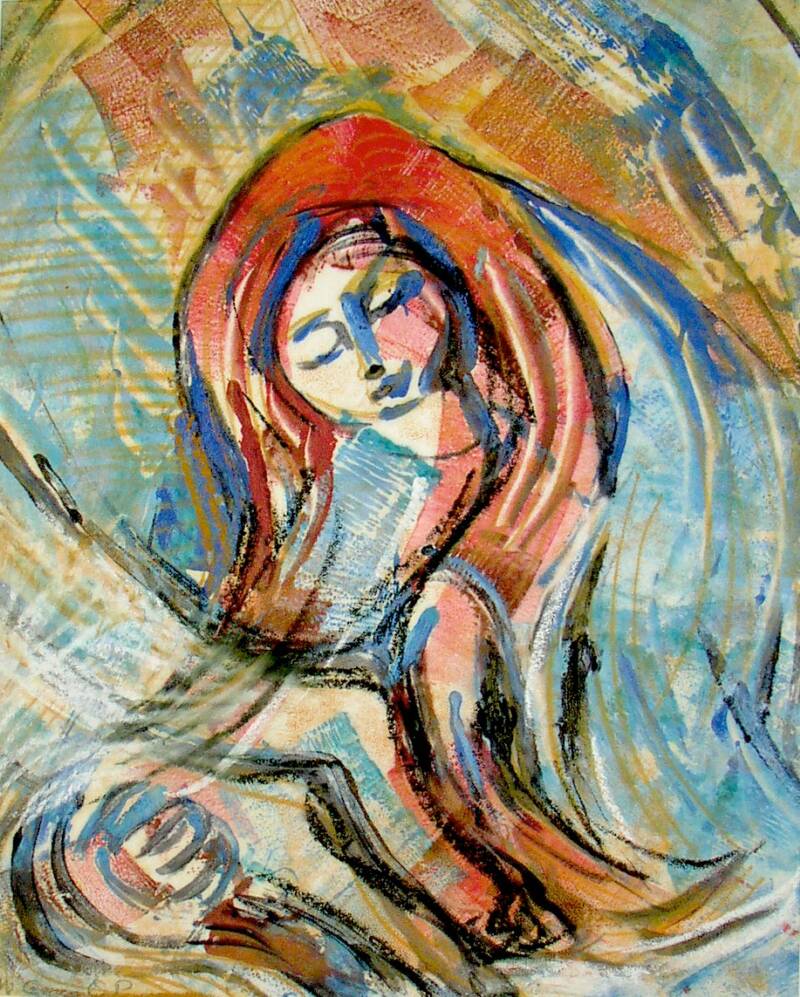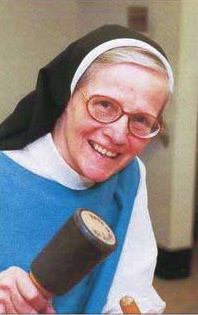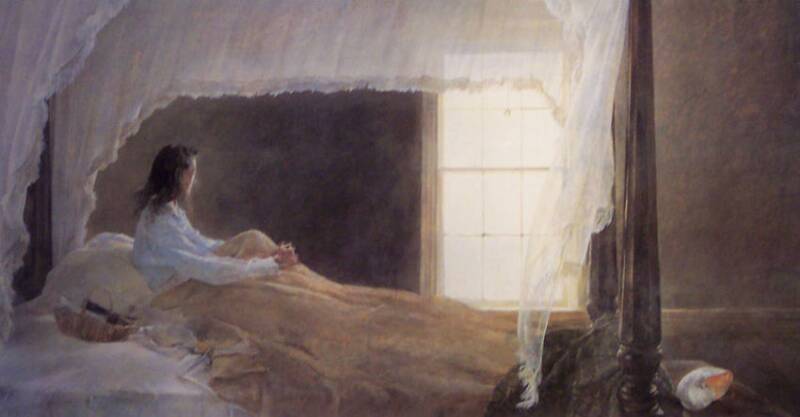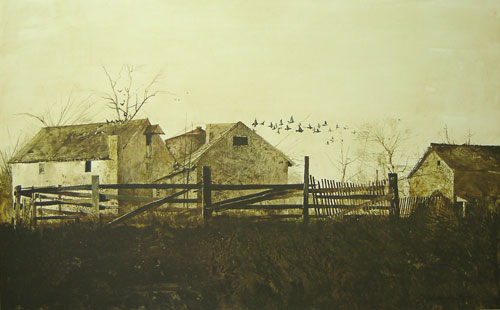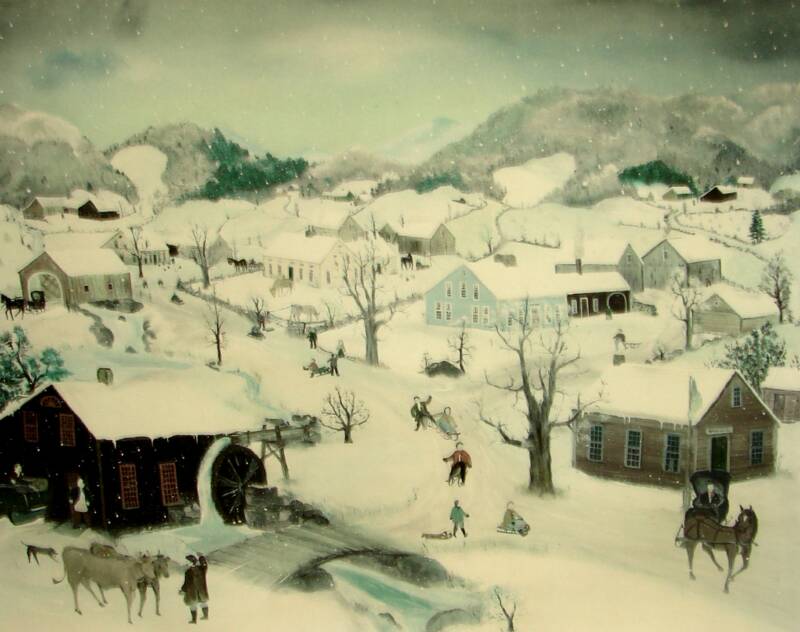Ting Shao Kuang was born in Chenggu, a village in the Northern province of Shanxi, China in 1939. This area, once was the center of an advanced civilization, was reeling from the ravages of the Sino-Japanese war. Ting's father, a Kuomintang official in Beijing, helped rally the Nationalist forces that eventually defeated the Japanese Imperial Army. Only two years later, Mao Zedong's People's Liberation Army took over the government of China forcing Ting's parents to flee to Taiwan leaving Ting and his sister with their grandparents in Beijing. Ting didn't see his mother again for 30 years.
By age 11, Ting was painting every day, using cooking oil as a medium for his pigment. Despite his lack of adequate supplies, he evidenced such remarkable talent that, in 1954, he was given the opportunity to attend the prestigious high school affiliated with the Central Academy of Fine Arts in Beijing. In 1957, Ting was accepted at Beijing's Central Academy of Arts and Crafts. Although he was taught "Socialist Realism" in his classes, it was during this time that he discovered the works of Picasso, Matisse and Modigliani. The paintings of these artists inspired him to experiment with new themes and techniques.
After graduating in 1962 with highest honors, Ting was signed to teach at the Yunnan Art Institute in Kunming. Here he painted during the night in an abstract style that was considered unacceptable by the government. This forced him to burn his paintings each morning to avoid being caught by the authorities. Although the people in Kunming had more freedom than Ting had ever known, his modernistic views still managed to come to the attention of the authorities. As a result, in 1967, he was suspended from his job and, when rumors of his impending imprisonment reached Kunming, he escaped into northern China. He found sanctuary in the Buddhist monasteries of Gansu where he studied the ancient sculptures they contained. Later he went to Dunhuang, an ancient caravan stop of the Silk Route from 4th to the 13th century. There he studied the paintings preserved on the walls and ceilings of over four hundred caves.
In 1968, Ting felt it was safe to return to Kunming even though it was mandatory to attend political meetings and it was still impossible for him to teach. By that time, however, there were four other artists there who shared his artistic views. After Mao died in 1976 and art classes finally resumed, the friendship that began in secret slowly began to surface. In 1979, these artists formed the Yunnan Shen She Art Association and, three years later, they exhibited at the First International Art Show in Hong Kong. In the same year, Ting was commissioned to paint a mural in the Great Hall of the People, which was an extraordinary honor for any artist, especially one who was considered to be an outsider, philosophically.
Living in the United States since 1980, Ting Shao Kuang has had more than one hundred personal exhibitions in America, Japan, Canada, Greece, Hong Kong and Taiwan, and has become a force in the international art world.
Ting's purposeful marriage of ancient art customs, masterful brush strokes, and calligraphic lines, mixed with the starkness and beauty of modernism, have made his works some of the most recognizable in the world. He is considered a world-renowned leader of the Yunnan School by the American art critic Douglas Finly. Japanese art critic Murobushi thinks him an exceptionally authentic Chinese artist, and French art critic Andre Parinaud once commented that "His art has a timeless exuberance, and its exultation of love has turned him into a 20th century Giotto" me."
James Schucker
(1903 - 1988)
James W. Schucker was born in Mt. Carmel, IL but lived most of his life in Quakertown, PA. He became well known for his illustrations and for his portraiture. He was a versatile artist, who worked in watercolor and oil.
Schucker was well known for his illustrations for national periodicals and magazines, including the Saturday Evening Post, Reader's Digest, American Magazine, Red Book, Good Housekeeping, America Weekly, Reader's Digest, Cosmopolitan and Colliers.
Schucker completed religious illustrations, illustrations for children's books, and illustrations for books on horses, which he was especially fond of. A close friend of Norman Rockwell, he was a successful illustrator and received many awards.
He also did advertising campaigns for companies such as Quaker State Motor Oil, Travelers Insurance Company, Seagram-Distillers Corporation, and Coca-Cola during World War II.
Schucker's Major Solo Exhibitions included the Meierhans Gallery, Hagersville, PA, 1964 and the Bucks County Free Library, Quakertown, PA in 1978. Major Group Exhibitions included the Chicago Art Institute, Chicago, IL, Parry Barn, New Hope, PA, Allentown Museum, Alllentown, PA, 1966, and Bucks County Illustrators, Bucks County Council on the Arts, Doylestown, PA, 1980. He was commissioned to do a mural for the New York Botanical Garden.
Schucker won Several awards for Illustration.
The Artists
A virtual art gallery specializing
in fine art work from renowned artists


 | ||||||
This page was last updated on: September 3, 2018
Copyright, Arts-Galleria.com, 2000.



Since we are still under construction, if you click on an artist and cannot get to the Gallery, please call us to discuss a purchase or email us regarding any other information or questions. Thank you for your patience and consideration. Mary
Jardin du Silence
Magic
Dreaming
Suzin
Rococo Heart
Nude Reclining in Red
Beginning New
Let It Snow
Eagle
Get Shot
Paris Bourse
Keith Reynolds
Keith L. Reynolds has been actively painting since 1961. He is an award winning member of the Society of Illustrators, New York, where he has been a member since 1964. Mr. Reynolds was born in Seattle, WA in 1929 and spent the early years of his life on Puget Sound plying its waters on the fishing boats, tugs and ferries that later would become the subjects of his paintings. He studied fine art at the University of Oregon, and upon graduation served in the military in the Sea of Japan. He returned to school at the Art Center College of Design to gain a BA in Professional Arts.
His work has been exhibited internationally, his paintings and prints enjoying great popularity in the far east. Most recently he has attended annual exhibitions of his work in Tokyo, Osaka, and Kobe. His work has appeared editorially in such publications as Yacht Digest in Milano, Italy, Boat Now, Japan, and Sail and The Yacht magazines in the USA. Now, his primary areas of interest are the shores, waters and craft of New England, the Chesapeake, Nova Scotia and Florida - thought trips to Greece, England, the Far East and the Continent have culminated in well-received prints and canvases.
Since publishing his first limited edition serigraph in 1980, Mr. Reynolds has gained international recognition for his prints and posters. His "Duel," the official America's Cup poster (1983) is one of the most popular marine pieces ever issued and is considered a classic. His affiliation with The Cup continued through 1995, including 1987 when he produced the official commemorative print for the Royal Perth Yacht Club, as well as official posters for "The Americans" syndicates.
A recent review in the Baltimore Sun said "Mr. Reynolds paints clean, highly detailed portraits of turn-of-the-century and modern yachts poised starkly before a blend of sea and sky....his sleek craft seem to cut through like a knife." Another reviewer once noted, "There is an obvious fascination (in Reynolds' work) with the vast planes of light and space of the sea."
Painter and Wilkes-Barre resident John Pacovsky has been working for many years to get his work recognized. Locally, he keeps a studio in the Arts YOUniverse mansion and has adorned the town with two distinctive murals.
He has been commissioned to create advertisements for Absolut and Absente liquor, and his 49 Absente pieces are featured in a book which documents the history of Absente artwork. Pacovsky has also been added to the permanent collection of the Smithsonian.
Off canvas, he invented the Corner Canvas, an innovation so simple the industry's elite have coined it the next significant achievement in the art world.
Artist Pacovsky considers himself to be a philosopher who paints.
Linda Roberts is a skier as well as an artist and the breathtaking watercolors for which she has become well known are depictions of the splendor, rhythm and grace of skiers and their winter wonderland. The crisp scenes are colorful, lively and compelling, but what gives them their character is certainly the artist's knowledge of the sport and the alpine terrain.
She is equally at ease painting a tranquil waterscape, a crisp New England town, a bouquet of daisies, or a skier blasting through knee-deep powder above the timberline. Linda conveys these vivid impressions simply, using transparent colors, softened textures, and finite detail. Her collection of prints and posters now includes 123 images, many of which are sold out.
Other commissions include work for The Limited, Marriott Corporation, Ski Magazine, Winter Park Resort, Aspen Ski Company, Snowmass Resort Association, Vail Associates, Grand Marnier, U.S. Ski Team, Audi, Continental, Vail Valley Foundation, Steamboat Resorts, and Ernst & Young. Dow Chemical has commissioned her to create a watercolor depicting the U.S. Open tennis tournament and the image has been reproduced as a poster.
In 1989 and 1999 Linda depicted the World Alpine Ski Championship in Vail, Colorado and also Vail's 40th Anniversary poster for the 2002-2003 season. The U.S. Ski & Snowboard Team has commissioned her to create original watercolors of gold medal skiers Picabo Street and Jonny Moseley. Each painting has also been reproduced into a limited edition with each print signed by the Olympic champions!
A native of Maryland, presently residing in Baltimore, Linda graduated from the University of Maryland with a degree in commercial art and after working as an illustrator and graphic designer, turned to painting full-time after her two sons were born. Kevin is senior art designer for Techstyles and owns a design firm called 657, and Brian is president of Clutch Creative in Broomfield, CO.
Linda Roberts
Ting Shao Kuang
1917-2009
Edwin Salomon
Edwin Salomon is an Israeli artist, born in Romania. Edwin believes that animal fauna is the best, expressive tool to express our true human characteristics, especially in the middle-east's "peaceful" environment. The spectator only has to put himself into the relevantly depicted scenario; and Edwin, himself, has done this for over 30 years.
Edwin Salomon's paintings appear in numerous private collections in Israel, the U.S.A., Canada, Uruguay, Brazil, Romania, Sweden, Hungary, as well as in public collections such as the National Museum of Bucharest, the Cluj Museum and the President's Residence in Jerusalem.
SISTER MARY GRACE THUL, O.P., graduated from St. Ursula High School and the University of Cincinnati, College of Applied Arts. Sister had a summer internship at the Cincinnati Art Museum, taught art in the Cincinnati Public Schools and established a custom art business with two colleagues before deciding to enter the monastery of cloistered Dominican Nuns in Cincinnati, Ohio, in 1962. In 1989, she moved to St. Dominic’s Monastery in Washington, DC. She now resides at Caterina Benincasa Dominican Monastery in New Castle, DE.
The fine arts have always been greatly esteemed and utilized by the Order of Preachers (Dominicans) as an expression of its ministry to praise, to bless, and to preach. Sister Mary Grace has attempted to blend the contemplative and artistic into one in living out her Dominican monastic vocation. Her over forty years as a Dominican Nun have provided opportunities to broaden her use of various art media including sculpture, painting, woodcarving and printmaking in giving expression to religious and scriptural themes. Sister is an award-winning artist who has exhibited locally and has received commissions for many liturgical events and places of worship.
Song Ping has been engaged in painting for over twenty years. Since he became interested in fine art in High School, he has studied Chinese ink painting as well as the history of both Chinese and western art forms.
In 1978 he graduated with honors from the Fine Art Department of The Shanghai College of Drama, and accepted an invitation to teach. A year later he became a professional painter working six years for the Chinese Artists Association. In 1985 he accepted a position to teach at the College of Fine Art, Shanghai University. In 1988, as an exchange professor, he came to the Department of Art, Lehman College, City College of New York, where he taught Chinese ink painting and the history of Chinese art. His performance there was widely praised by both the students and faculty members of the school. From 1983-85, Song Ping's work won award prizes for excellence several time at exhibitions in Beijing, Shanghai, and Nan-Jig. He also had shows in Japan, Denmark, and the United States, as well as a travel exhibition in four African countries. In 1987, he held a one-person show at the Shanghai Museum of Fine Art, which was considered an unusual honor for an artist of his young age in the one billion population of China.
Song Ping's art is rooted in the Chinese painting tradition. He has succeeded in combining technical strong points on Chinese cultural painting with styles of western art forms. Song Ping utilizes Chinese stone paints and ink as well as western acrylics and watercolors. He paints on both sides of rice paper, then mounts the painting on a second sheet of rice paper. This produces a painting of amazing durability and longevity. Despite being influenced by the styles of the modern western painters, Song Ping's work is distinguished with the sensibilities of
Chinese minority folk art. To expose himself to new sources of inspiration, he stays with the minorities in the provinces of southwestern and northwestern China for two months every year.
Sr. Mary Grace Thul, O.P.
John Pacovsky
Ting Shao Kuang with one of his paintings.
Song Ping
